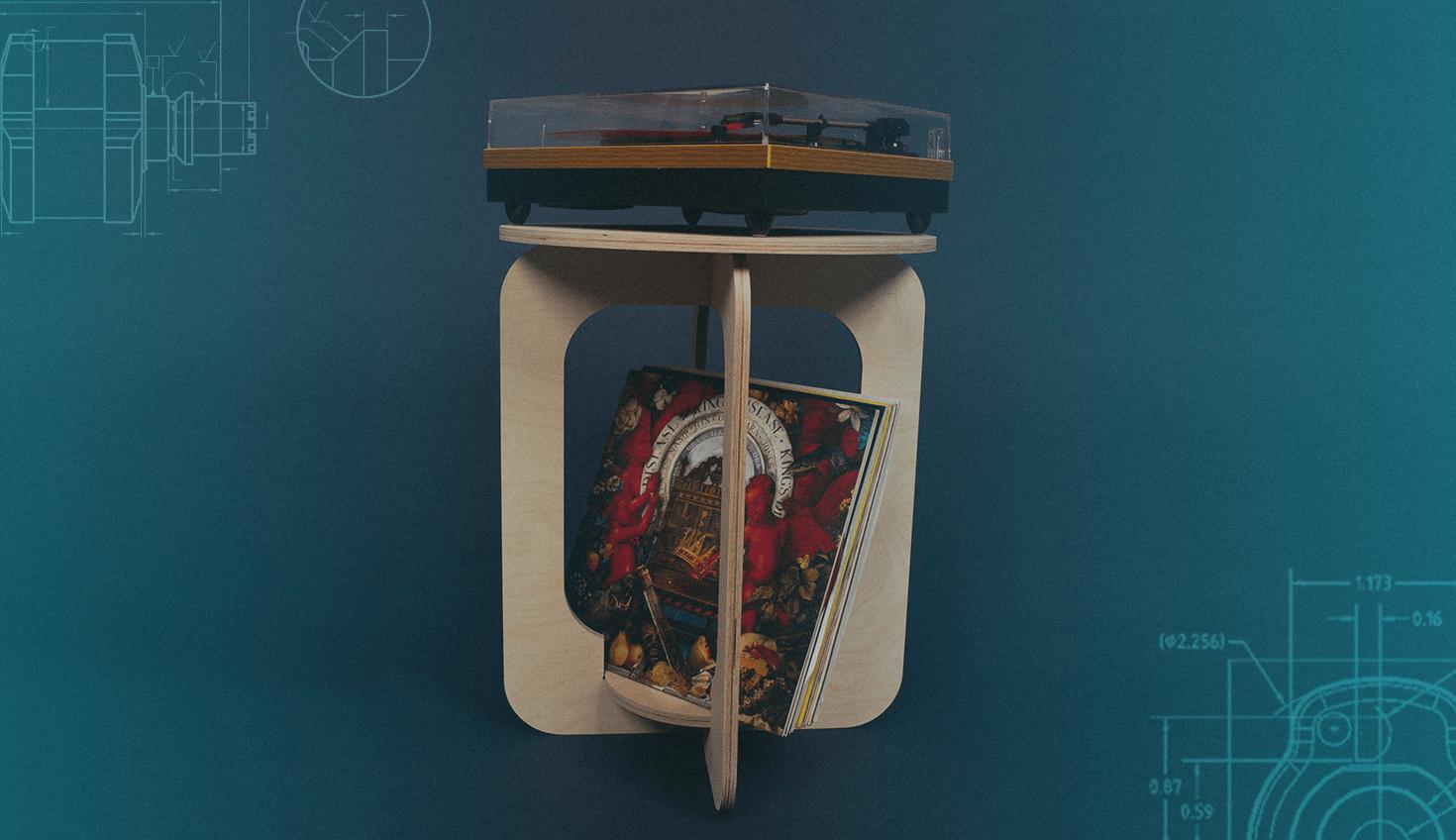
4:59
I received a vinyl record player as a birthday gift four years ago after moving to Montreal, my new temporary home.
At the time, everything I owned could fit in a small SUV. This was a practical choice; in five years, I moved five times. Plus, moving is always easier and cheaper when you don't have much stuff and your apartment comes furnished.
This perfect birthday gift presented a problem: I didn’t have a place to store the records I bought to play on it and didn’t want to add a bulky piece of furniture to my manageable inventory of personal belongings.
Enter Nọrọ: A combination stool and table with a small storage compartment that is easy to assemble and take apart.
(Courtesy: BOA Media)
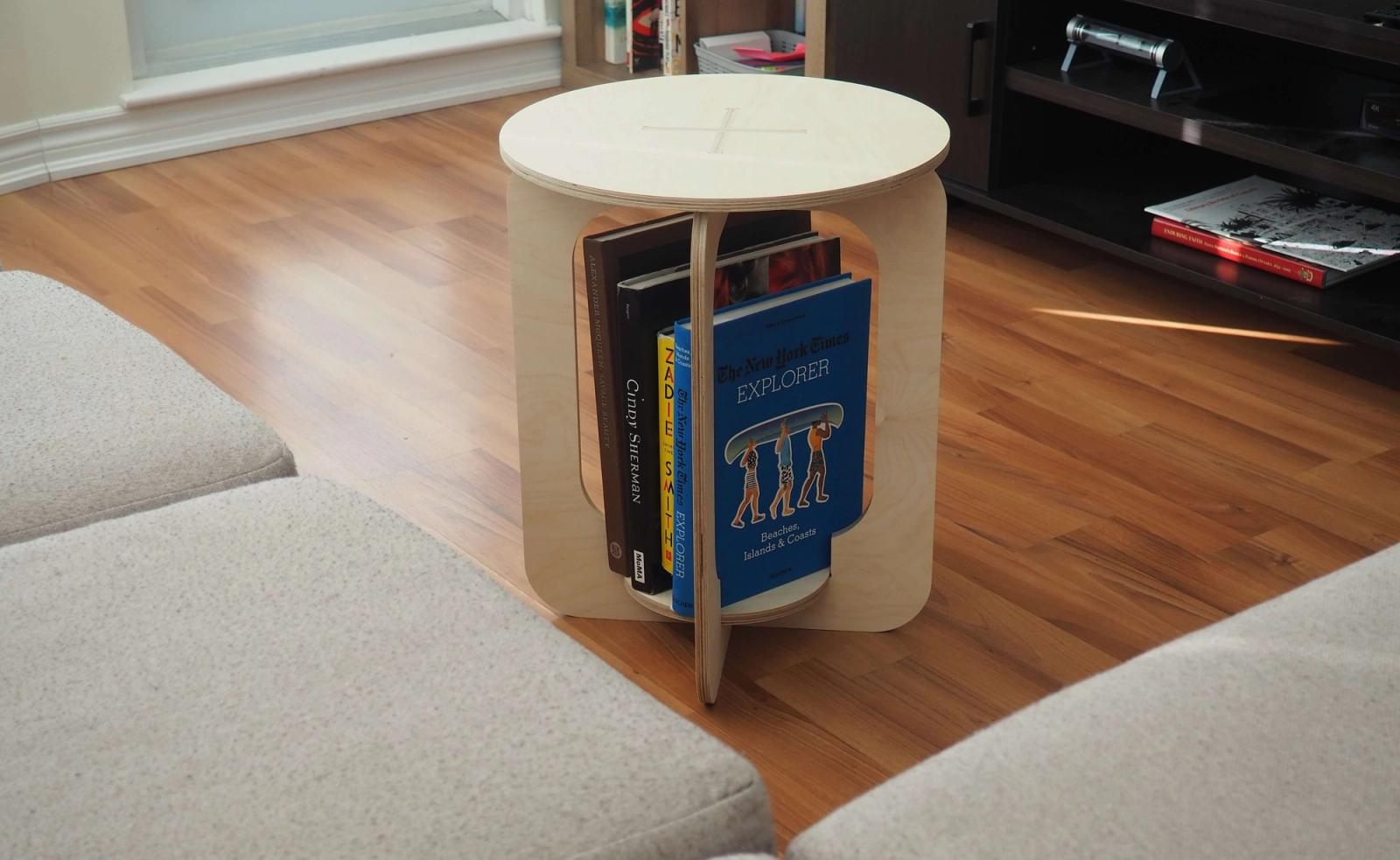
CAD in Furniture Design & Ideation
As an engineer, I had the skills and knowledge to build something unique and durable. I had to make some decisions before going to the drawing board to build Nọrọ.
I decided against nails or any kind of fastener and I had access to a Computer Numerical Control (CNC) Router through a fabrication shop nearby.
I settled on wood as the material. Wood’s compressive forces could also hold the parts together in the absence of nails if done right.
Then I ran through several ideas by quick sketching, just thinking through what it could look like, and eventually settled on a concept with a curvature to manage loading weight better. Deciding on the right way to build in storage was a little tricky initially, but eventually figured I could use the space under the seat for this.
Once I decided on the concept, I began using CAD for furniture design. I started using Onshape two years earlier as an engineering design grad student, and this proved easy because I could access my designs on the shop’s computer.
Onshape was also great for two things: I could assign the material thickness as a variable and I could place Mate Connectors using sketches for assembly. These two features were important for me as I could easily tweak the design for different types of wood and the model (including the assembly) would regenerate immediately.
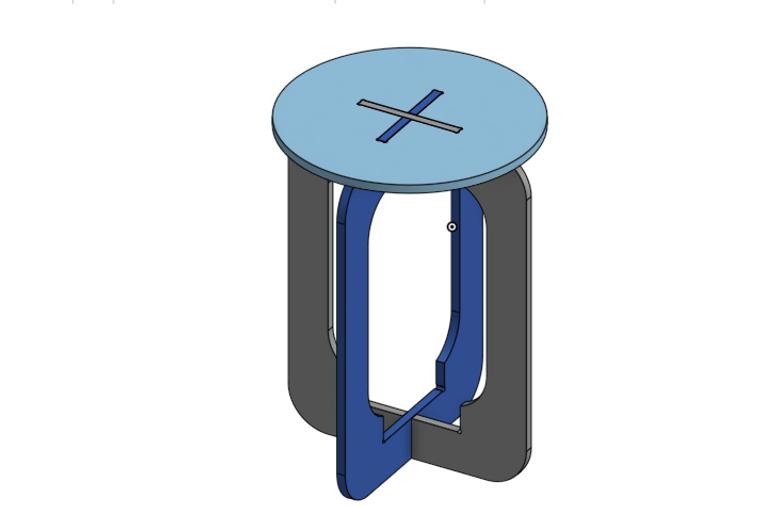
The first design of the Nọrọ stool modeled in Onshape.
Once I had the CAD model ready, the stool was coming to life and required a name. I called it Nọrọ, a word that means “stay” in Igbo, a language spoken in the South Eastern part of Nigeria where my family originates from.
Prototyping the Nọrọ Stool
Using the shop’s CNC Router, I cut Nọrọ in MDF (Medium Density Fibreboard) wood.
The first cut fit perfectly; in fact, I still have it in my current apartment. It has moved with me twice since then.
Assembling the stool takes 20 seconds and it’s strong enough for me to sit on. And any time I need to move to a new apartment, I can take it apart and carry it as a flat pack.
(Courtesy: BOA Media)
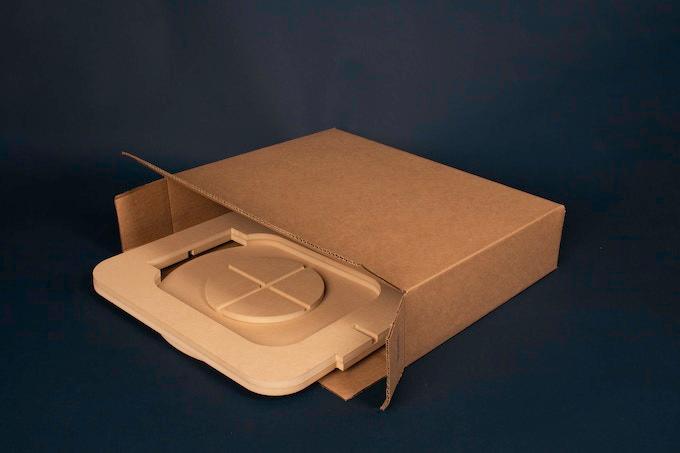
I also found that Nọrọ solves a common problem for those who move a lot for work, school, or other circumstances.
As apartments get smaller and younger people move from place to place, the opportunities to make a space your own have significantly reduced. Landlords routinely obstruct renters from making changes to their property, even when they could help make the apartments feel more like homes.
For example, some clauses in rental agreements prevent tenants from making holes in the wall to hang up picture frames.
I received a lot of great feedback over the years about the stool, which I used to update the design. Specifically, I increased the diameter of the top plate and added a bottom plate for the storage compartment.
Then I experimented with different wood types; this required changes to the thickness variable in Onshape to replicate the tight fit. Eventually, I chose Baltic Birch Plywood for its lightweight and durability.
During this stage, I worked with a number of vendors in the Greater Toronto Area (GTA). Each vendor had specific file types they worked with and exporting those types was really easy with Onshape.
Producing locally is really important to me, not just because of reduced emissions due to shorter shipping distances but because investing in local businesses is good for the economy.
A Successful Product Launch
For any designer, sharing a product you designed with the public is the toughest thing. In order to sell the stool at an affordable price, I have to produce it in medium-to-large quantities. I turned to crowdfunding to help with the launch.
On January 9, 2023, I launched Nọrọ on Kickstarter. A month later, the campaign ended with 137 backers pledging to bring it to life.
The response has been great. I knew why I liked and wanted to produce Nọrọ, but seeing other people resonate with the need for aesthetically pleasing, accessible, and simple designs is reassuring.
As a designer, those three things guide my work, and I’m happy to know I’ve tapped into a community that feels the same way.
The Future of Nọrọ
(Courtesy: BOA Media)
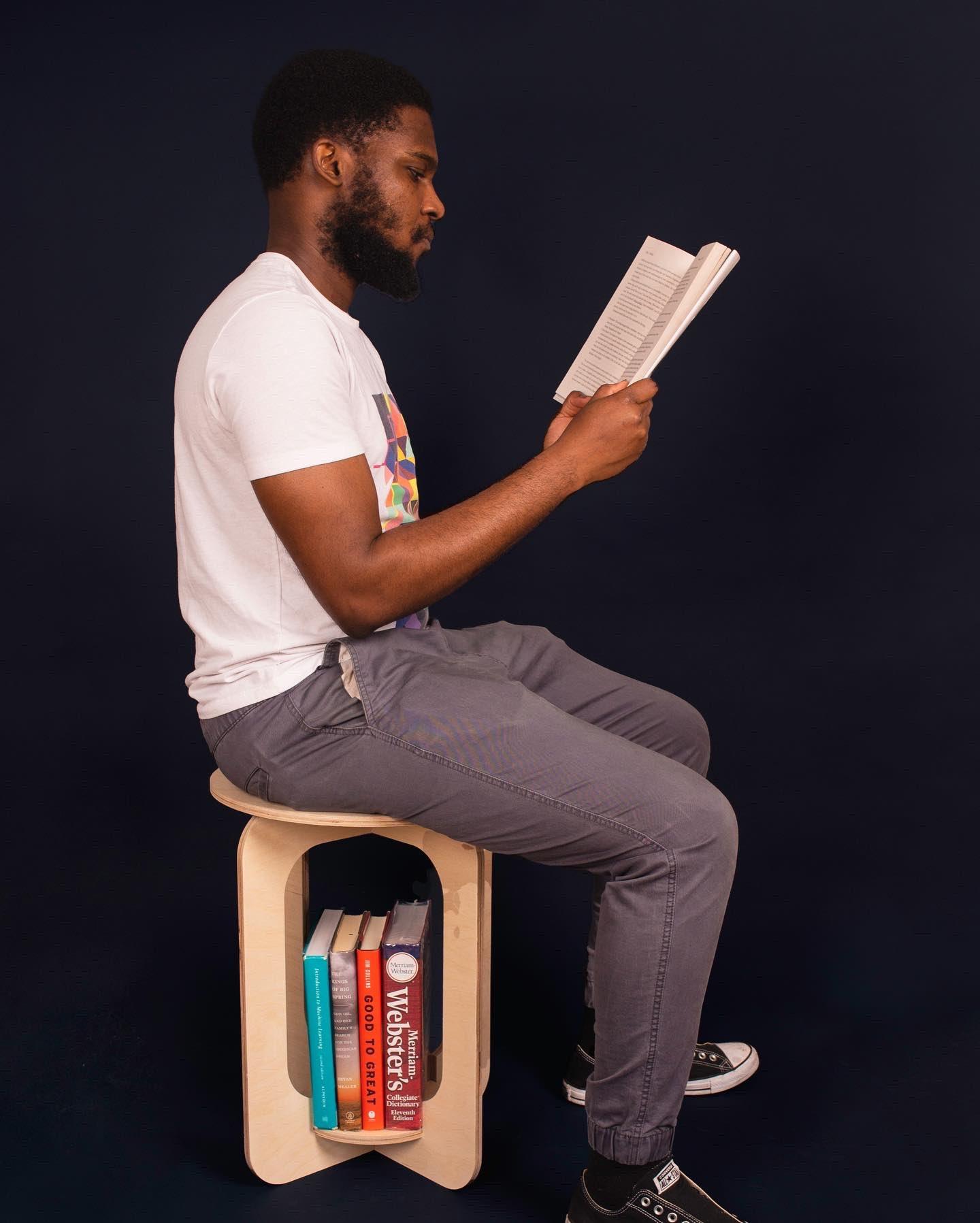
Right now, my priority is to deliver the stools to all the Kickstarter backers. I’m working with a factory here in the GTA and plan to begin shipping in April. I plan to host an in-person pickup event for about 50 of the backers who are in the Toronto area. This will help me meet those who backed the campaign in person and refund their shipping cost.
After that, I hope to get Nọrọ into a few design stores. I’ve never done that before so that’s pretty exciting as a solo designer. I’m also working on a new product with a colleague that we hope to launch next year; it’s an interval timer and it will be the first time we both launch a product outside of an established company. I’m excited about the future!
Follow Chukwuma Asuzu at chuma.design or on LinkedIn.
Try Onshape Today
Head to our sign-up page to choose the right CAD plan for you and your team.
Latest Content

- Case Study
- Consumer Products
BOA Technology: Redefining Outdoor Fit Equipment with Cloud-Native Onshape
11.03.2025 learn more
- Blog
- Aviation, Aerospace & Defense
- Branching & Merging
- Custom Features
- Learning Center
- Onshape Government
Why Aerospace & Defense Teams Choose Onshape for Product Development
12.18.2025 learn more
- Blog
- Evaluating Onshape
Cloud-Native CAD 2025 Wins: Revenue Growth, Real-Time Collaboration, Unified CAD-CAM
12.17.2025 learn more
- Blog
- Becoming an Expert
- Assemblies
- Simulation
Mastering Kinematics: A Deeper Dive into Onshape Assemblies, Mates, and Simulation
12.11.2025 learn more



